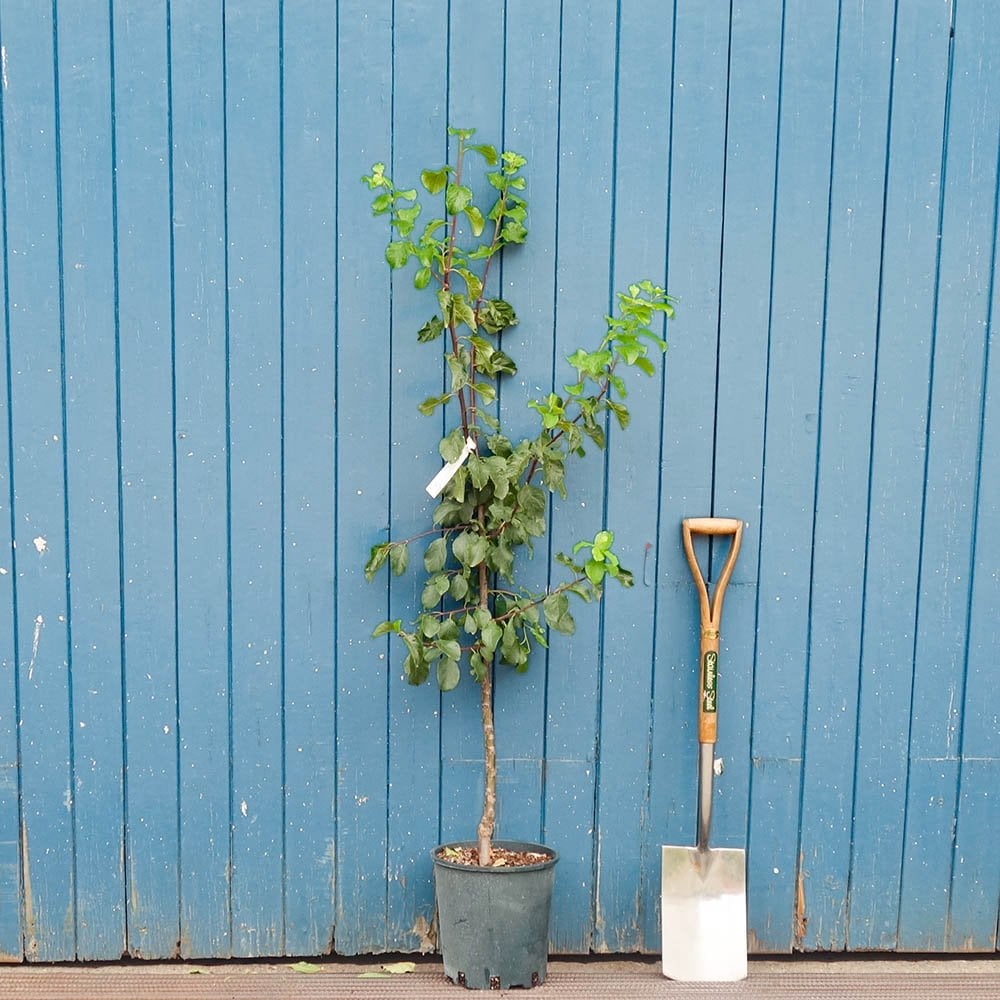Marjories Seedling Plum Tree
Marjories Seedling Plum Tree
Dual Purpose Eating & Cooking Plum Trees

Marjories Seedling Plum Tree
Dual Purpose Eating & Cooking Plum Trees



Key features





Description
Marjories Seedling plum trees produce large, good quality purple fruits that are sweet with a strong flavour. The plums can be used for eating fresh and cooking, either way they are delicious! Flowering later than some varieties, Marjories Seedling is therefore a good choice for cooler positions prone to late frosts.
A fantastic choice when there is room for just one plum tree as it is dual purpose and self fertile so no pollination partner is required. The plums ripen late in the season (late September), so it is also a great variety of plum tree for extending the picking season if you have multiple varieties.
Prunus domestica 'Marjorie’s Seedling' originates from Berkshire in 1912.
| Small shrubs (1-3) | Young trees & 4+ small shrubs | Select semi-mature trees & shrubs (1-4) | All other mature trees (any quantity) | |
|---|---|---|---|---|
| Mainland UK ex. Scottish Highlands | £10 | £12 | £35 | from £55 |
| Scottish Highlands & the Islands | From £30 | |||
| Outside Mainland UK | Currently we are unable to deliver outside of Mainland UK | |||
Product Details
Key features





Description
Marjories Seedling plum trees produce large, good quality purple fruits that are sweet with a strong flavour. The plums can be used for eating fresh and cooking, either way they are delicious! Flowering later than...
Marjories Seedling plum trees produce large, good quality purple fruits that are sweet with a strong flavour. The plums can be used for eating fresh and cooking, either way they are delicious! Flowering later than some varieties, Marjories Seedling is therefore a good choice for cooler positions prone to late frosts.
A fantastic choice when there is room for just one plum tree as it is dual purpose and self fertile so no pollination partner is required. The plums ripen late in the season (late September), so it is also a great variety of plum tree for extending the picking season if you have multiple varieties.
Prunus domestica 'Marjorie’s Seedling' originates from Berkshire in 1912.
Planting & Care
Delivery Information
| Small shrubs (1-3) | Young trees & 4+ small shrubs | Select semi-mature trees & shrubs (1-4) | All other mature trees (any quantity) | |
|---|---|---|---|---|
| Mainland UK ex. Scottish Highlands | £10 | £12 | £35 | from £55 |
| Scottish Highlands & the Islands | From £30 | |||
| Outside Mainland UK | Currently we are unable to deliver outside of Mainland UK | |||
MORE TO GROW YOUR GARDEN




















